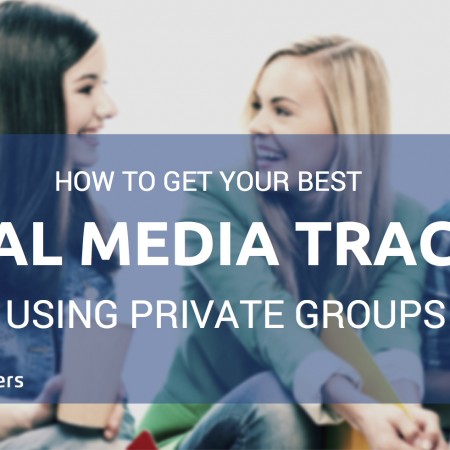Engage! How to Get Customers and Boost Your Business on Social Media
Social media is the popular kid on today’s marketing block. For your business, it’s one of the most integral tools at your disposal. Social media helps get you noticed – and stand out, if you’re creative enough to do your own thing, and mix in a little bit of social media platform knowledge on top of it. It’s useful for promotion, engagement, and building a following. The one key benefit social media does better than any other tool, for a business? It humanizes your brand. It puts a face and a voice to a name. It makes you approachable, relatable, and trustworthy. However, this is only possible if you’re using social media the right way. Let’s talk social media & a nutshell guide on boosting your business for more ROI, customers, and action from your time there. A Nutshell Guide to Boosting Your Social Media Presence for More Business & Return If you want your business to have a voice and a presence, you’ve got to jump into social media and get going. Here’s how. 1. Engage and Be Human My number one tip for mastering social media is this: engage. You’re a human being, and your audience wants to see evidence of that. If you don’t personally engage, you’re not providing that evidence. Of course, you can’t engage without being approachable and friendly. Don’t keep yourself at a distance from your followers. Be real and be human! This ties in nicely with my next tip… 2. Get Your Hands Dirty To engage and be human, you have to get in there. In short: do some work to build that relationship. Get your hands dirty. Start conversations yourself. Ask your followers questions, comment on others’ posts, and follow up personally. A great example of this in action is the Twitter chat we host weekly, Tuesdays at 10 a.m. CST. It’s called #ContentWritingChat and it’s a fantastic way to talk to people about a topic we’re passionate about. Rachel, our Content Specialist/Social Media Manager, even writes weekly recaps on our site about the live chat hour. It’s a favorite method of mine to nurture a lively, active community around a single social media event. Anybody can join in and give their opinions, advice, or insight. To get conversations going, start your own Twitter chats surrounding a relevant topic. Engage industry voices as well as customers. The interaction that comes out of it will surprise and delight you. Search #ContentWritingChat on Twitter, and you’ll see some highlights of our conversations. From the 7/25 #ContentWritingChat, here’s a top tweet (I love the point Nicole makes – social media CAN get you out of your shell, in a great way!) — Totally introvert here too and social media has made me a hell more social than I am prone to be in IRL. #ContentWritingChat pic.twitter.com/MFGHTZCnRD — Nicole Michelle (@relishwell) July 25, 2017 Other ways to engage on social media: Tag people in your posts – Tagging people in your posts is a good way to respond to their content and keep the conversation going. On Twitter, this is how you stay engaged. Don’t forget to log in, yourself – Don’t let a “tool” be YOU. Don’t fall back on your scheduled posts via software, and let that be it. Remember to manually log in to your accounts, check your notifications, and respond to people. Comment – Respond to people through comments, and start conversations through engaging with comments. [clickToTweet tweet=”Get more customers + boost your business on social media with these tips from @ExpWriters!” quote=”Get more customers + boost your business on social media with these tips from @ExpWriters!”] 3. Set Goals for Interactions If you find yourself forgetting to log-in or neglecting your business accounts for social media, start setting goals. For instance, you might create a simple objective to have at least five interactions on social media each day of the work week. This forces you to pay attention to how you’re engaging and how much. You’ll understand where you need to improve and what you need to do it. As you get better and more consistent about engaging, you can up your ante. Make your goals harder and keep track of your progress. Pretty soon, you won’t need goals to stay active and interactive on social. 4. Start Talking It can feel intimidating to jump into social media and put yourself out there. This is especially true if you’re introverted or haven’t done much interacting online. Don’t worry, though – you just need a place to begin. To start engaging, you have to start talking. Here are some ideas: Jump in on Trending Topics If you want to get in on a larger conversation, post about trends and use hashtags. More importantly, tie together the trends with topics in your industry. Take a look at how Denny’s used the Kentucky Derby to post and poke a little fun at the trending event at the same time. Plus, they reinforced their main draw: They have really good breakfast and really good pancakes. Within the seated sections of Churchill Downs, the upper-crust don hats of elegance & style, a millinery of all shapes, tastes, and sizes. pic.twitter.com/pfkTV0MEJU — Denny’s (@DennysDiner) May 6, 2017 Celebrate and Create Events Along with casual events like Twitter chats, you can also host and celebrate any other event or holiday you like. For instance, celebrate your business anniversary with a themed post and a coupon code for your online store. Or, honor a noted figure relevant to your industry with a post. Out of Print did something like this in celebration of Cormac McCarthy’s birthday. They didn’t use the opportunity to self-promote. Instead, they created a graphic quote that appeals to their book-loving audience. It’s an interesting one that invites conversation. Plus, it’s totally shareable: For the Best Social Media Conversations, Don’t Overthink It – Just Genuinely Be Yourself, & Be Present All these social media tactics have one thing in common… They’re fun. If you’re not having fun chatting, sharing, … Read more

